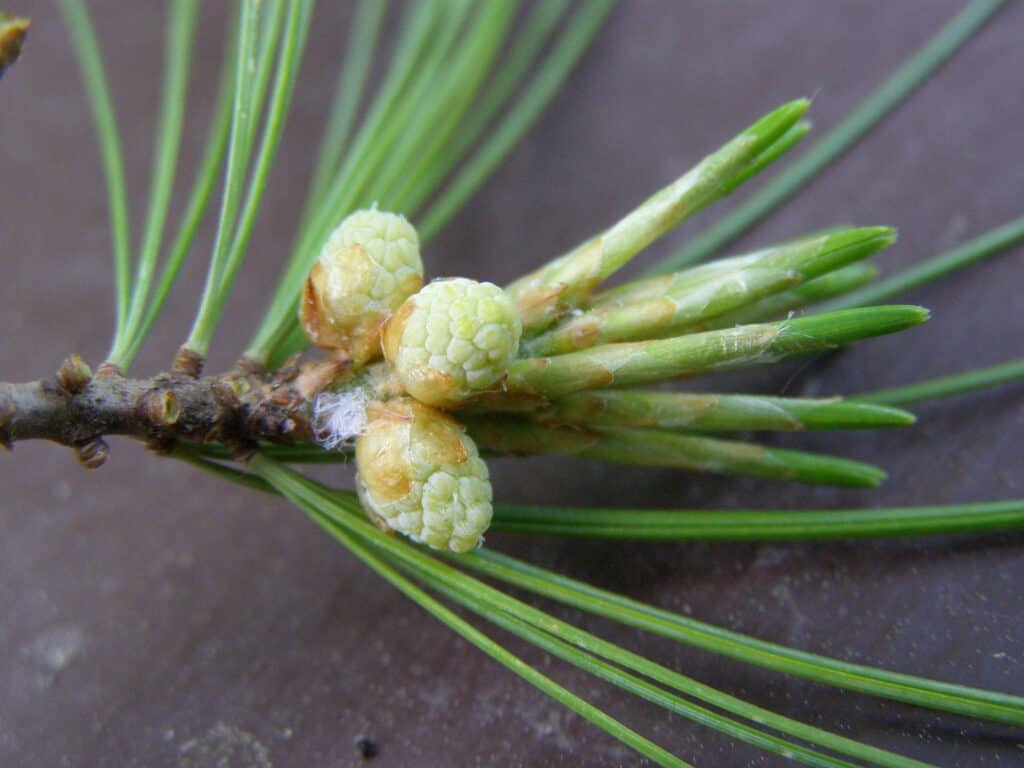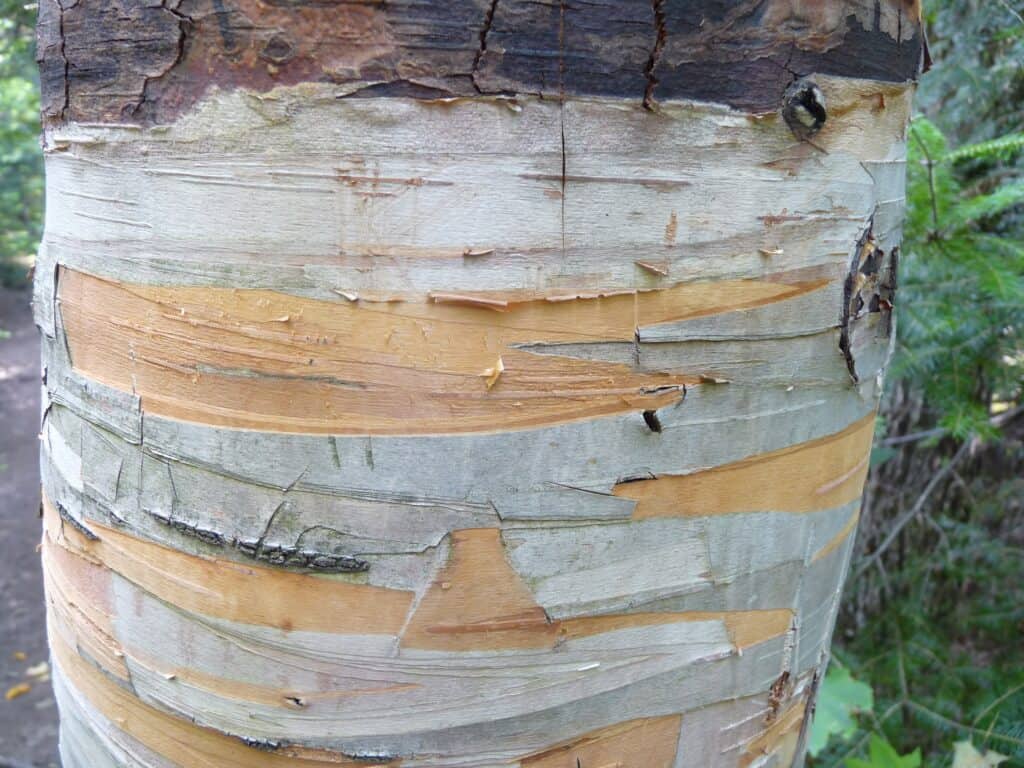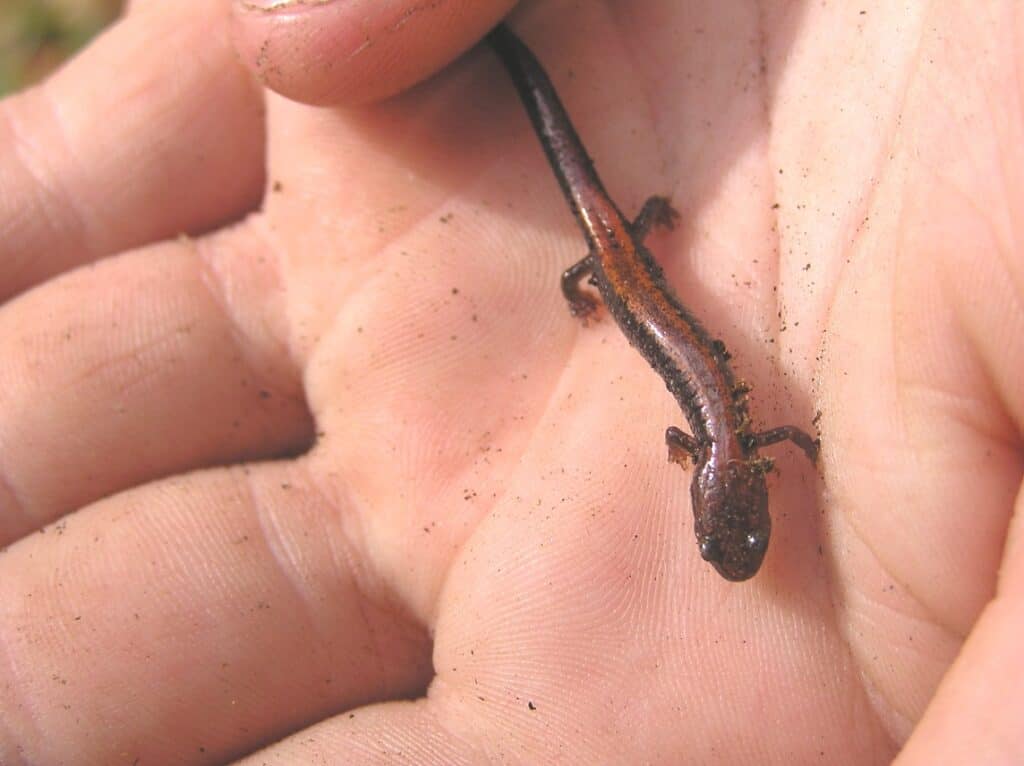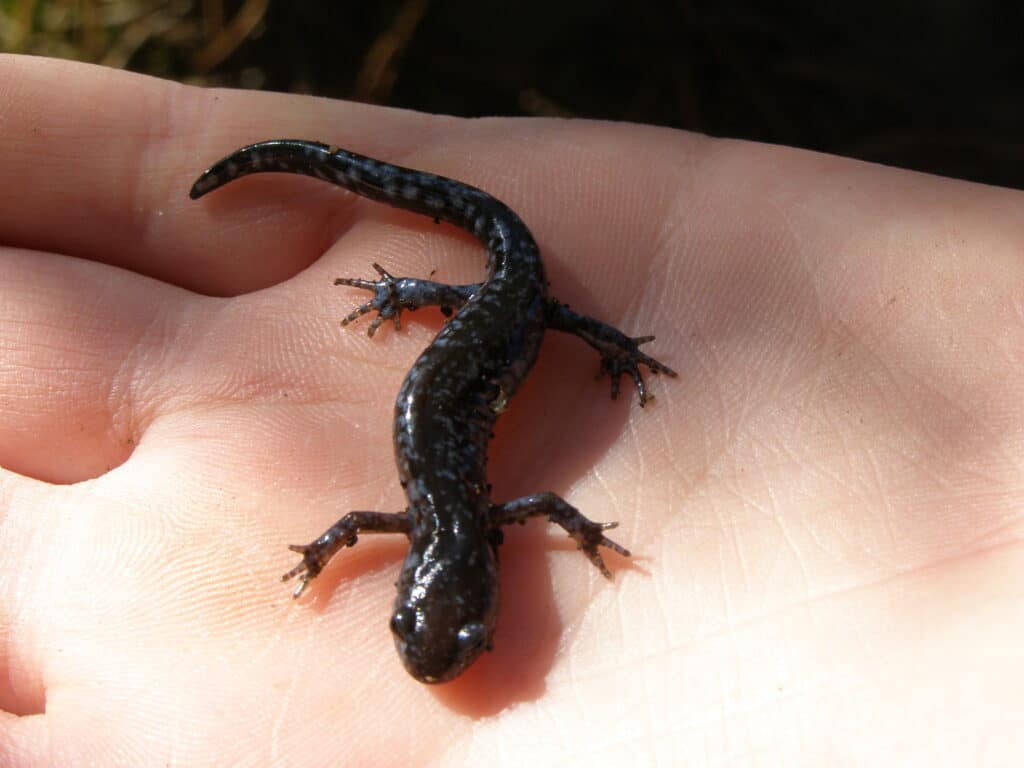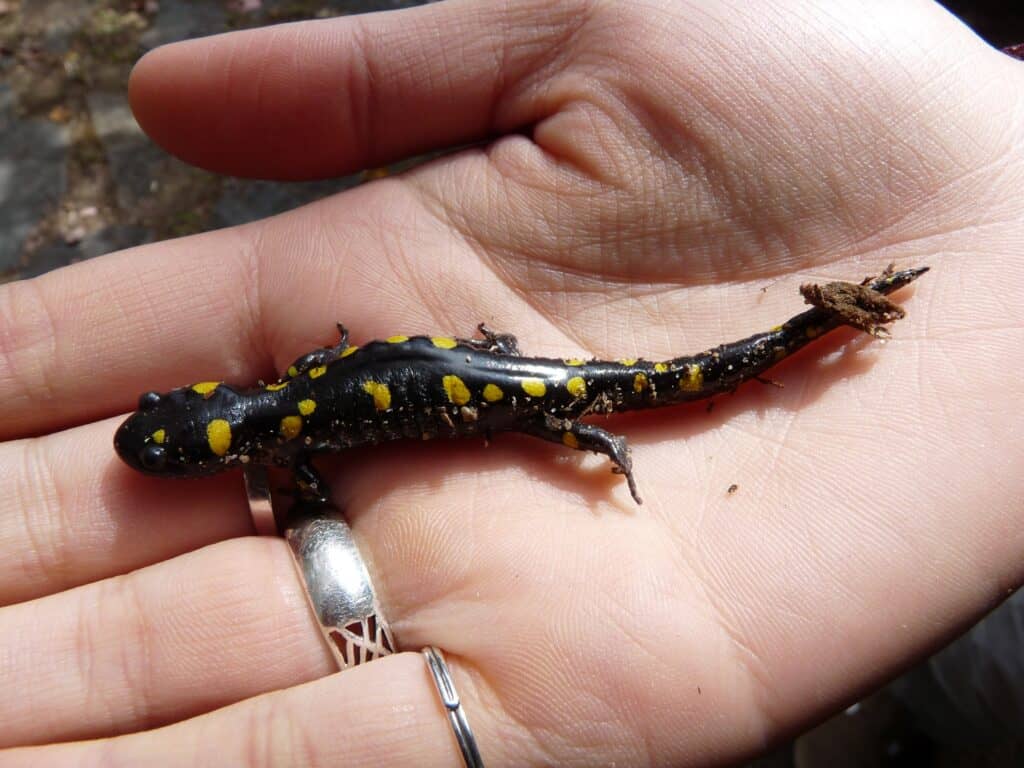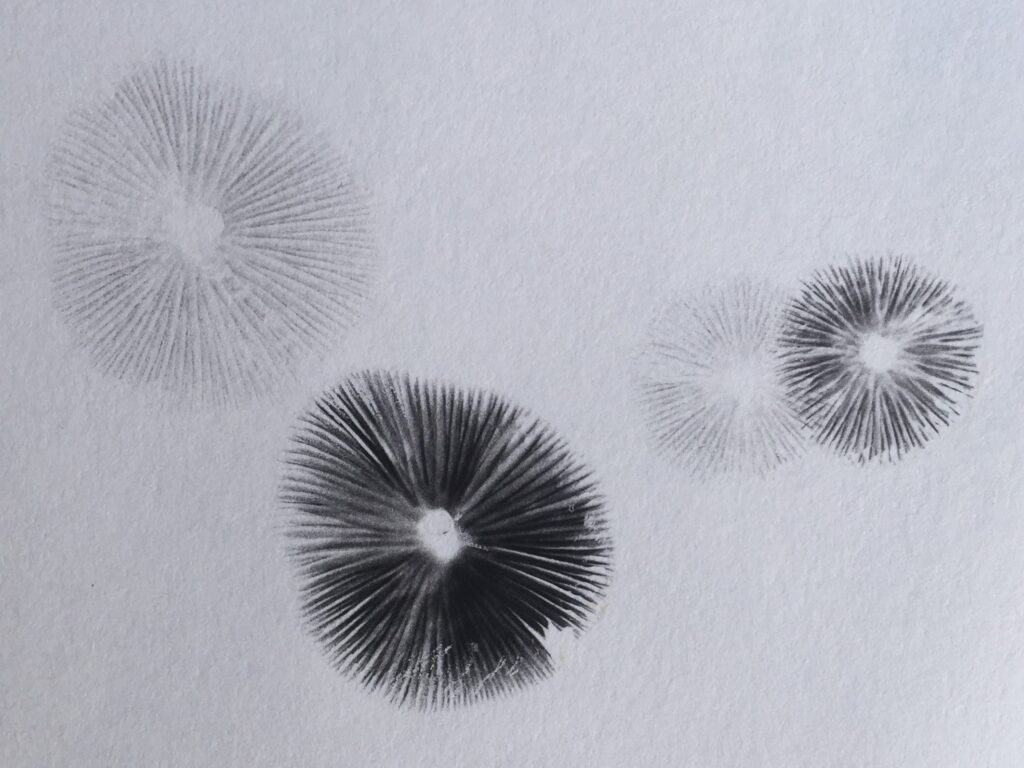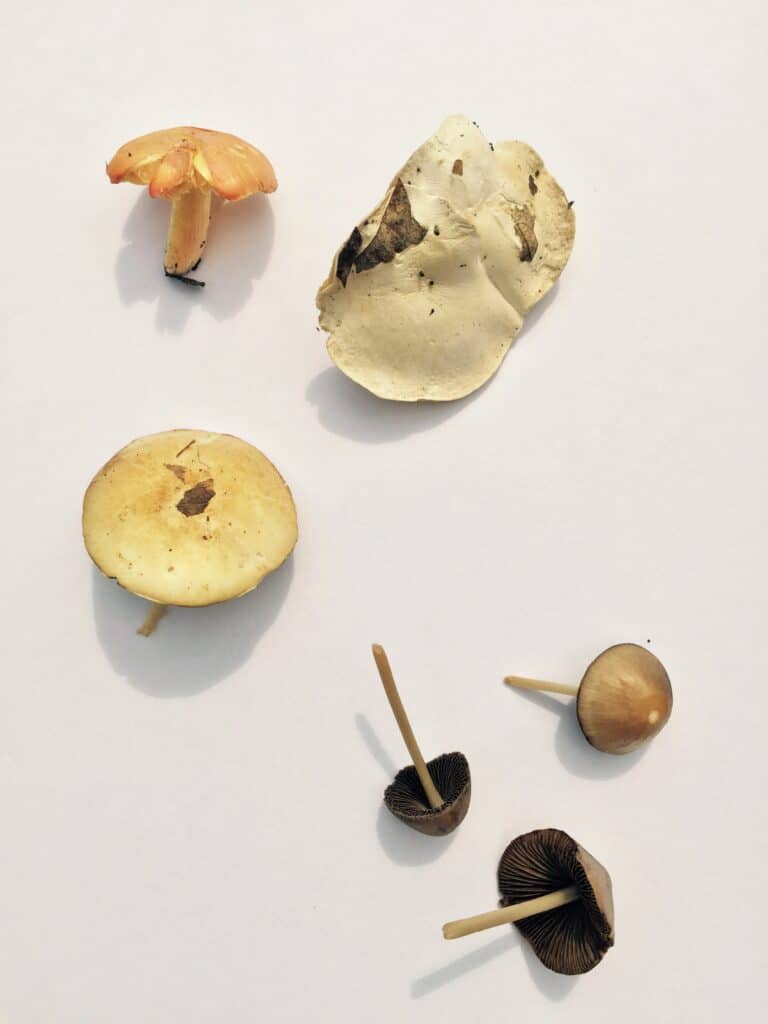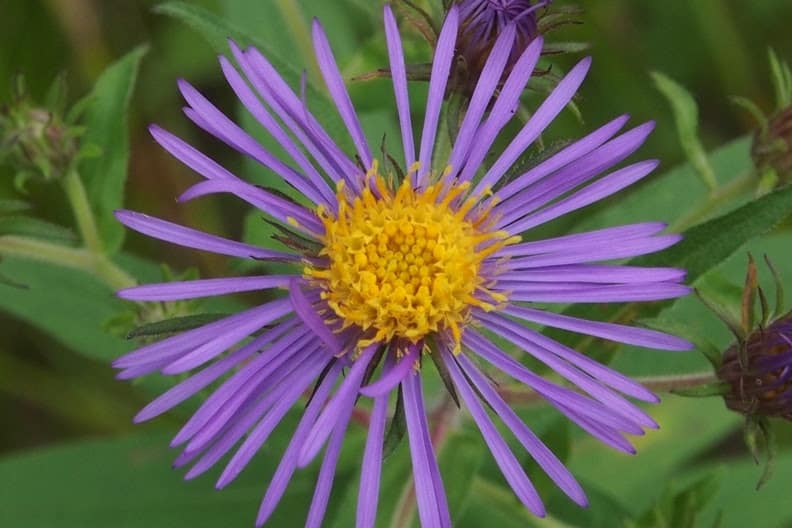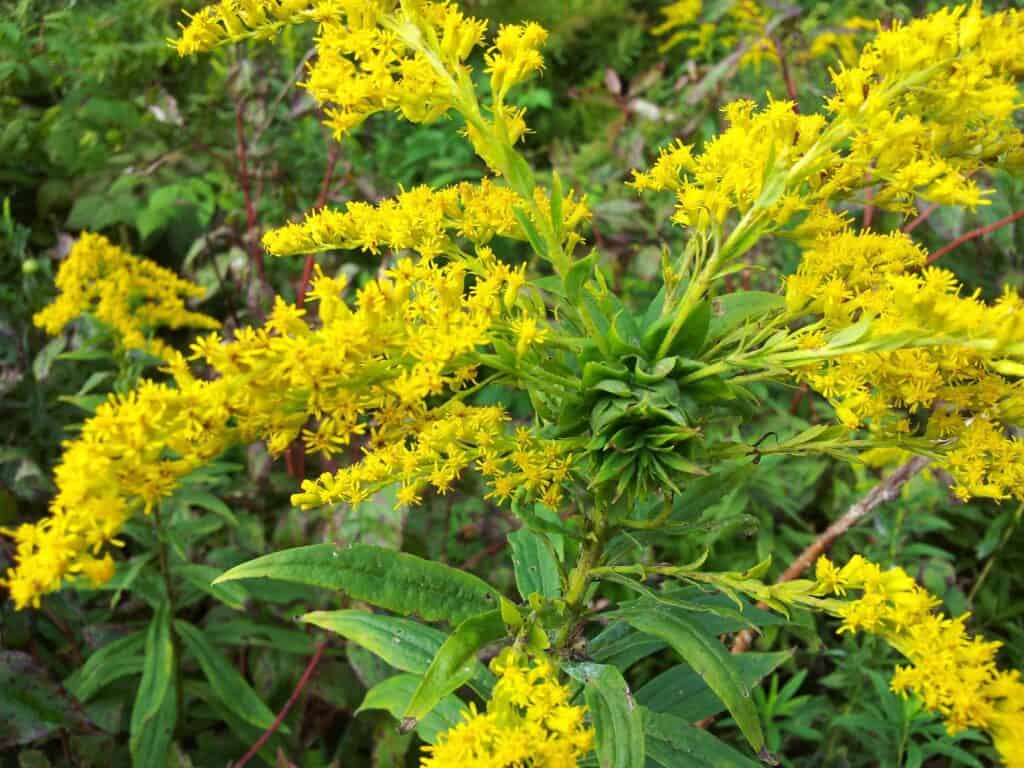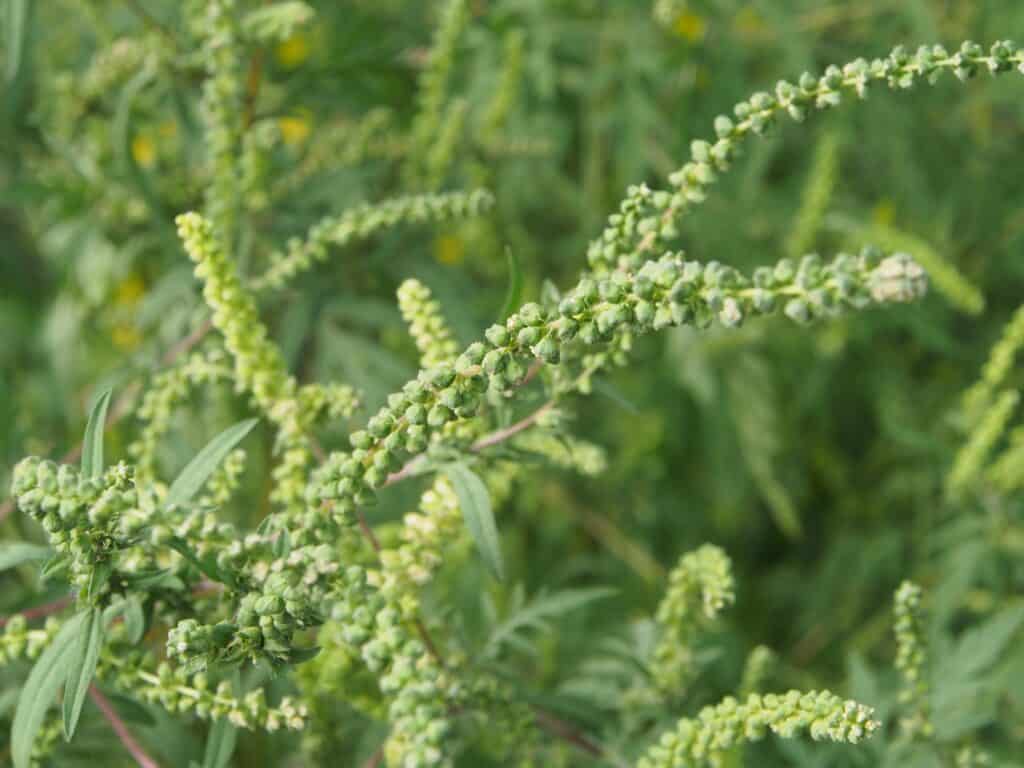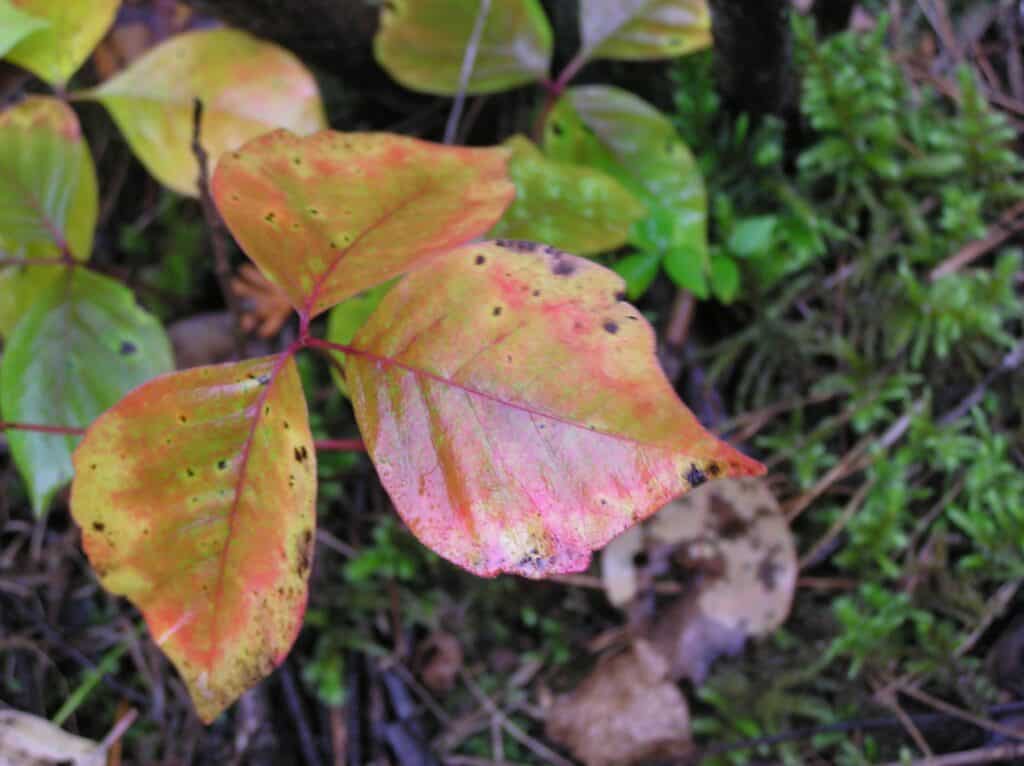It’s wonderful to see outdoor learning exploding in popularity this fall. Not only does it provide cognitive, social and health benefits – both physically and mentally – but it’s seen as an effective way to lower COVID-19 transmission. Since parents and teachers may be looking for activity ideas, I thought I’d offer some suggestions for early fall. For more ideas, including activities to engage the senses, go to the Columns section of my website at drewmonkman.com and scroll down to “Spring nature activities”. I would also recommend a resource called “Step Outside”. You can check it out and subscribe at https://bit.ly/3he3L0q
Fun with seeds
Seeds have evolved to disperse as far as possible from the parent plant in order to have room to grow. They can spread as sticky hitchhikers on an animal’s fur (e.g., burdock), as spinning helicopters (e.g., maple key), as silky parachuters (e.g., milkweed), as tasty fruits in a bird’s stomach (e.g., grapes), as nuts buried in the ground (e.g., acorns), or even by “exploding” from the seed pod (e.g., jewelweed). Here are three ways to have fun with seeds.
- Using an empty egg carton or ziplock bags, visit different habitat types and gather seeds of different dispersal methods. Glue them to a piece of cardboard, label, and organize by how they travel.
- Place a large wool sock over one shoe. The taller the sock, the better. Walk through the long grass of a field. Examine your sock. How many hitchhikers stuck on for a ride? Use a magnifying glass to study how the seed was able to attach itself. You might be able to see little “hooks”.
- Find some milkweed or dandelion seeds. See how far you can make the seed travel through the air without touching it. Just blow on the seed or wave your hands to create air currents. Have a competition to see who can make their seed travel furthest.
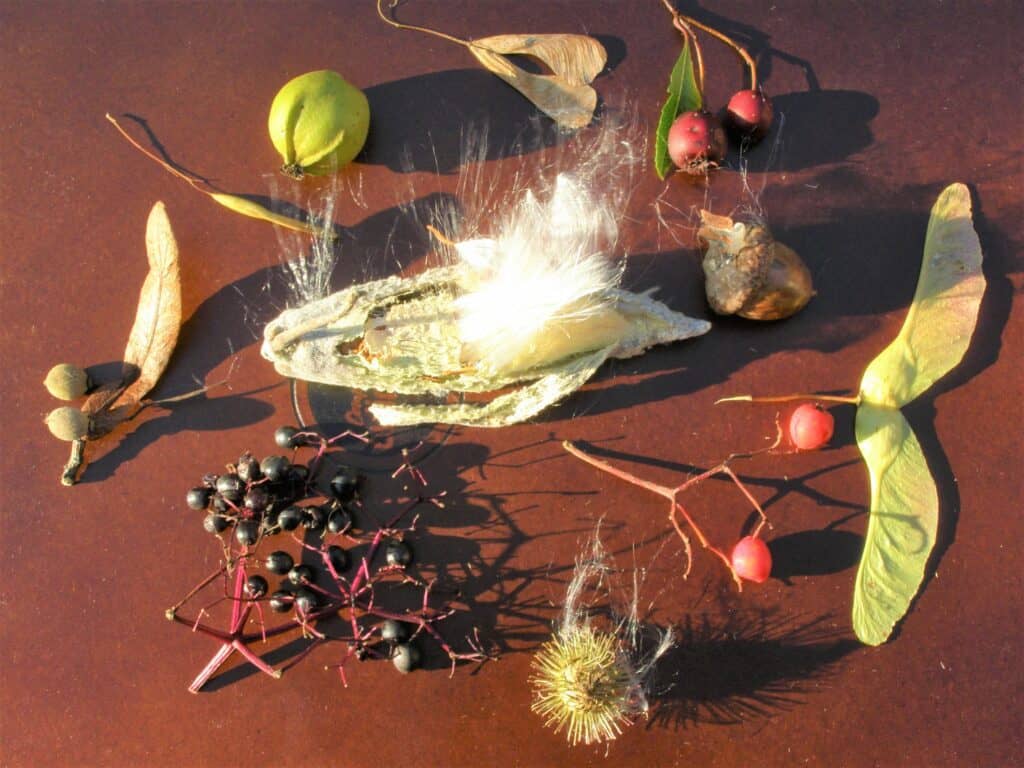
A fall leaf collection
The leaves of trees and shrubs come in a wonderful variety of shapes and colours. Making a leaf collection is a time-honoured way to get to know the most common species. Even the youngest of children can take part. All you need is a roll of clear contact paper, scissors, and Scotch tape. Start by having the children collect a variety of leaves from deciduous (leaf-shedding) trees and shrubs. Only collect leaves that are fresh and pliable. Sort them – by species if you wish – on a large table. Cut two sheets of contact paper to the desired size and place one of the sheets sticky side up. Arrange the leaves on the paper. Place the second sheet, sticky side down, on top. Press with your fingers to smooth away any air bubbles. An alternative way to preserve leaves is to place them between two sheets of waxed paper and go over the sheets with an iron.
With the children’s help, you may also wish to identify and label the leaves. A useful identification resource for both trees and shrubs can be found at https://www.ontariotrees.com/. Some common shrubs or small trees with colorful leaves include dogwoods, choke cherry, raspberries, and Viburnums like highbush cranberry.
Tape your leaf collection to a sunny window and marvel at how the light makes the leaves glow. After a few days, you might wish to attach the collection to a piece of Bristol board and maybe put it up on the wall. Another option is to use the preserved leaves to make autumn-themed greeting cards. Cut out and tape the leaf or leaves to card-sized pieces of folded Bristol board. Share the beauty of fall by mailing the card to a friend or family member!
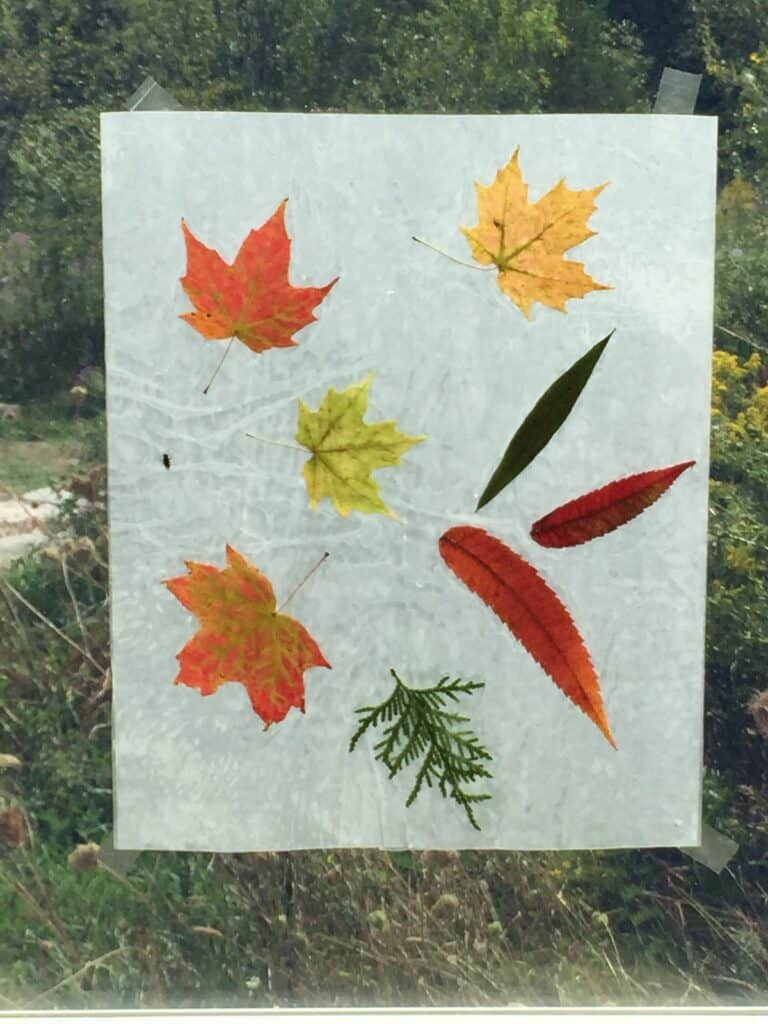
Tree Tag
When you can put names to the trees around you, it is as if you’re among friends. Visit an area with a variety of trees where it’s safe to run. Show the children the distinguishing characteristics (e.g., leaves, bark) of some of the trees in the area. Designate a person as “it.” “It” shouts out the name of a tree, (e.g., “white pine!”). The children need to run and touch a branch or trunk of the correct species to be “safe.” Anyone tagged, or who runs to the wrong tree becomes “it.”
You might also want to sketch or take pictures of the trees, including a close-up of the leaves. Give each tree species a nickname as a memory-aid. For example, paper birch could be “Toilet Paper Pete”, because the bark looks like toilet paper. Similarly, white pine might be “Five Finger Freddy”, since the needles are in bunches of five.
Catch a web
Spiders are especially common in the fall, and their webs are easy to find, especially in fields with small shrubs. In this activity, you can actually capture and preserve the web. Start by locating an easy-to-access web and observing the spider that made it. Lightly sprinkle baby powder on both sides. This will make the webbing more visible. Apply a spray adhesive to a piece of black construction paper or cardstock. With the black paper behind the web, slowly bring the paper towards you until it touches the threads. Then, with the web on the paper, carefully cut the mooring threads holding it in place. On the back of the paper, note the date, location, type of web and maybe even the species of spider that made it.
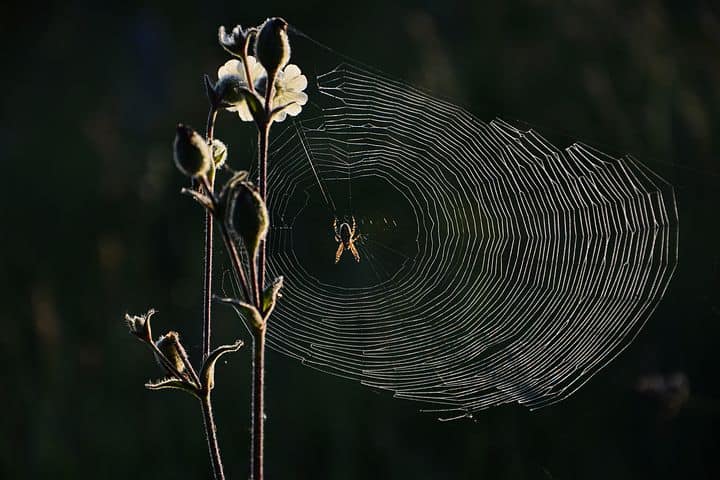
A salamander hunt
- In order to breathe, a salamander’s skin must be moist. It therefore needs to shelter itself from direct sunlight. Look for salamanders in wooded areas by lifting up logs, flat rocks, or even old boards. If you find one, gently place it in a container. Observe the counter shading (darker on top and lighter underneath). Notice, too, how streamlined it is — slim and flat. Red-backed salamanders can resemble earthworms, so be sure to look closely. Afterwards, carefully put it back under or beside the log or rock where you found it.
Spore prints
When conditions are right for reproduction – usually following a period of rain – mushrooms sprout from fungi. A mushroom is like the fruit of the fungus. Instead of having seeds, however, a mushroom produces millions of tiny spores, which are released from the underside. Some of these spores will eventually drift down onto moist soil or wood, and a new generation of fungi will develop.
Each species of mushroom produces a different pattern of spores, known as a spore print. These patterns are surprisingly beautiful in design and colour and can actually be used for identification purposes.
To make your own spore print, all you need are sheets of white and dark paper, a wide-mouthed drinking glass or bowl, and some hair spray as a fixative. Head out into the woods and collect two each of several different types of mushrooms. Those with gills on the underside work best. Gently remove the stalk so that only the mushroom head remains. For each different variety, place one head gill-side down on a white sheet of paper and one head on a dark piece. Dark spores show up best on lighter paper and vice versa. Place a few drops of water on each mushroom head. Cover with a glass or bowl and leave for a day. Remove the cover and carefully lift the mushroom straight up. Try to avoid sliding the head to the side. With any luck, you will see a beautiful, delicate spore print on the paper. If you want to preserve the print, carefully apply hair spray.
An early fall scavenger hunt
Kids love scavenger hunts. However, it may take several outings to find everything on the list. Adapt as necessary for children of different ages.
____Leaves of 5 different colours
____Aster (purple flowers)
____Goldenrod (yellow flowers)
____Ragweed (tiny yellow-green flowers)
____Poison ivy
____A winged seed like a maple key
____A parachute seed like milkweed
____A sticky, hitch-hiker seed
____ White, red, & blue berries
____ Mushroom growing from soil
____ Mushroom growing from tree trunk
____ The smell of fallen leaves
____ 2 different insect sounds
____ 2 different bird calls
____ A frog in the grass
____ A spider web
____ A grasshopper
____ A cricket
____ A wasp
____A honey bee
____ A caterpillar
____ A beetle
____ A sulphur (yellow) butterfly
____A monarch
____ A squirrel or chipmunk
____ A crow or blue jay
CLIMATE CRISIS NEWS
Only a tiny fraction of the public feels a true sense of alarm for what is in store for us if we continue on the present climate trajectory. But even alarming people won’t necessarily inspire action. Most people need to be equally aware of reasons for hope and encouragement, hence this weekly update from both perspectives.
ALARM: California is experiencing record heat and its worst wildfire season ever. More than 16,000 square kilometres have already burned. However, the historically worst months for fires – October and November – are yet to come. According to Mike Flanaghan, a wildfire researcher at the University of Alberta, climate change-induced wildfires like those this year in Australia, the Amazon, and California are “only going to get worse and worse.”
ENCOURAGEMENT: According to the recent Climate Insights 2020 report from Stanford University, the number of Americans who feel passionately about climate change is rising sharply. The issue also appears to be more important in this year’s election than ever before. Despite the turmoil caused by overlapping crises such as COVID-19 and racism, support for action to curb climate change has not diminished.
For local climate news and ways to take action, go to https://forourgrandchildren.ca/ and subscribe to the newsletter. For Our Grandchildren is also on Facebook.
